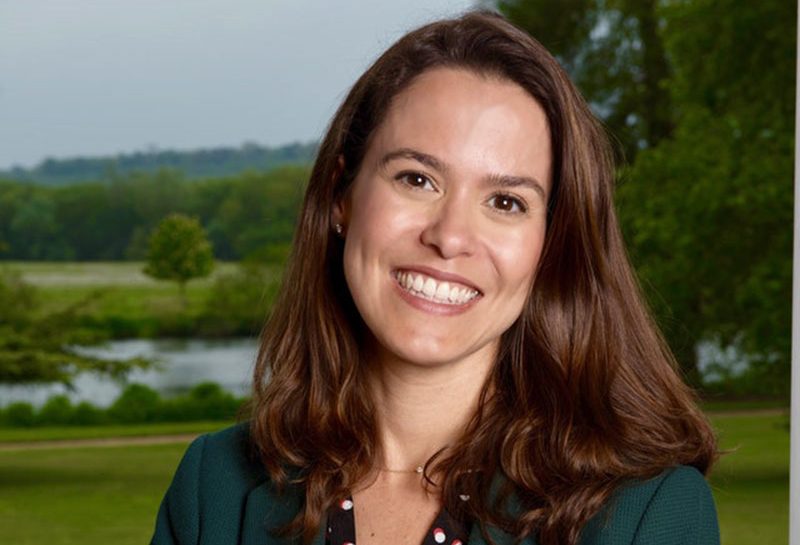Authored by Certified Business Psychologist Laura Howard. Certified Business Psychologist, Laura Howard, reflects on the webinar she recently delivered to ABP members. Below she outlines the main findings of her published research uncovering systematic barriers women face when being authentic as leaders. Importantly, she gives…

Programme Director, Leadership, Organisations, Behaviour
Henley Management School
19th October 2021
A changing landscape in the workplace is presenting us with risks and opportunities, argued Dr. Tatiana Rowson at the October meeting of the ABP. More people are extending their working lives and young people are coming into the workforce with new skills and aspirations, leading to the concept of the “Quad Generation workforce”. This creates diversity but the benefits can be counterbalanced by inevitable tensions: never before have we had so many generations in the workforce at the same time. This presentation looked at the kaleidoscope of this diversity and illustrated this by concentrating on older workers, examining this in the context of life transition. The following were reviewed:
- Changing demographics
- Creating an Age Friendly environment
- Age “Intelligence”
- Anticipating and looking forward
Changing demographics
The traditional Pyramid structure of the workplace demographic is being reshaped to a “Pillar” structure. Inevitably workforces are now more varied and are living longer but different lifestyles and health issues mean that we are not necessarily healthier. Covid restrictions, and a decline in the overall available workforce, are putting additional pressures on people to work longer. These trends are reflected internationally.
The Centre for Ageing Better estimates that we now have a higher than ever proportion of workers over 50, and that much of this is attributable to older women in the workforce. Younger and Older people in the workforce have been impacted disproportionately by Covid and in addition by first in first out employment policies. The 25-50 age group have benefited the most because they are in a better position to return to work. The 50+ age group want to continue to work, but they feel discouraged to do so because of discrimination and the state of the market.
QuadGen studies have highlighted enduring stereotypes, some positive and some negative. Older workers are seen as wise, dependable and resistant to change, whereas younger workers are seen as disloyal, lazy and selfish but innovative, dynamic and technologically savvy.
We regularly talk about people in relation to age: discussions about the workforce in this context. Men benefit from “maturity” as they age, whereas women just grow old, leading to ageist norms and gender stereotypes.
Unfortunately, enduring stereotypes breed ageism in various forms and pressures to conform to societal norms.
- “Lookism” disproportionately affects women
- “Ableism” addresses the concept of decline in the context of ability to perform
- Age norms and stereotypes
- Internalised, embedded and normalised. Internalised ageism can affect our confidence and attitude to undertake kinds of work.
- Age categorisation: a narrative of entitlement. Categories are forced on us by artificial constructs resulting in pressures amongst older workers to allow younger ones to fill these roles, creating resentment
- Age norms and stereotypes.
Creating an Age Friendly Environment
Dr. Rowson challenged by asking “How old is an older worker” and “how far are you from being an older worker” and “what is the ideal scenario for your late career”. The problem is that age is driven by
- arbitrary concepts such as chronological age, biological age (health and fitness), and social age (the context in which we are “immersed”). The OECD has changed its definition from 50 to 55 but it is all complicated and relative.
- a complicating worker lifecycle, as highlighted by North and Shakiri (2019), which can be viewed as Generational, Phase of Life, “Tenure” and “Experience”. The Tenure issue is especially challenging for existing workers as the new worker may appear “younger” and “more dynamic”
Some sectors need employees to continue working as they may have special skills: talent is not age bound: this throws up issues of what should be a pensionable age and the changing life landscape, the age dimension and work accumulation. But at the end of the day, ageing is a process which sees declining personal resources and which necessitates the management of risks.
What are the risks which older workers face?
- A lack of relevant skills
- Poor health, as a result of undertaking work in earlier years which was not subject to health and safety legislation
- A “one size fits all” approach to employee welfare and needs
- A lack of investment and championing
- Lack of opportunities
- Ageism in all forms, including the menopause and its effect which is all but ignored
Most employers take the wrong approach, looking solely at market needs. There are many ways of addressing the issue more creatively.
- An individual approach to ageing
- Championing a positive age climate
- Investing in Lifelong Learning
- Promoting Health and Wellbeing. Some employers are still not prepared to be hybrid and are insisting on a full return to the workplace. This is causing widespread distrust as we emerge from the pandemic
- Jobcraft and learning how to cope with flexible working
Individuals can
- Be more proactive in addressing purpose, values and needs
- Life choices
- Career review. What is desirable, what serves and what works?
- Having a critical look at how you are managing your Health and Wellbeing
What is an Age Intelligent workplace?
Workplaces should provide seamless accommodation for different age groups. This could be achieved using the concepts of mentoring and reverse mentoring, but evidence suggest that a fresh approach to Diversity is needed which can lead us to new models to address the following perspectives and challenges.
- A big challenge is social identity, perceived “seniority?” leading to content quality which can be poor.
- Age diversity as an opportunity
- Stereotypical threat which can easily lead to bias
- Polarisation of groups in a working environment can lead to disagreement and friction
However, one of the key opportunities is that co-workers can regard themselves as adding value through “Knowledge Utility”. De Meulenaere et al. (2016) looked at age variety and age polarisation in the context of organisation size and found that it was polarisation not age variety which causes friction. Age diversity can be very beneficial and transmission of “an active memory system” can lead to effective Knowledge Transfer. Care must be taken to ensure that diversity leads to constructive engagement and not polarisation and that there is a balance between the key attributes of Generation, Age, Tenure and Experience.
Burmeister et al. (2021) has proposed in his research interventions that maximise opportunities through Age Intelligence through a two-theory model which describes “Transactive Memory Systems”:
- Identity orientated training, linked to perceived similarity with co-workers yet demonstrating a stereotypical threat, yielding workplace context quality
- Knowledge orientated training, linked to perceived similarity with co-workers but linked through “Knowledge Utility”, leading to effective “Knowledge Transfer”.
Conclusion and looking forward
Managing a QuadGen workforce effectively means dealing with
- An age diverse workforce
- Managing various stereotypes
- The subjective nature of Age
- The measurement of the impact of how people demonstrate the ability to work together
- The stereotypical threat. Creating a sense of belonging is the most effective way of heading off this threat
- A workforce community. This can be created by “Sharing Life Experiences”.
- The prevalence of “labels” which are easy to attach but difficult to dismantle or retract
- Attitudes. Sulkiness in the workplace is almost always about the attitudinal difficulties
- Difficulties thrown up by Workplace Rigidity. These normally have as their background internalised “Value-Systems”.
What would really transform the working environment for older workers is greater autonomy, an appreciation that older workers have much to contribute, and opportunity for lifelong learning and self-direction.



